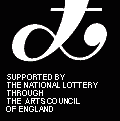The following lesson introduces haiku from scratch, and by the end of it pupils are in a position to write good haiku of their own. It starts with stories of the 17th century Japanese poet Basho, goes on to examine features of classic haiku and modern haiku, and culminates in the writing task.
The lesson is written as a self-study unit which you can follow to prepare yourself for the class. It is accompanied by suggestions for how to organise it as a class teaching session, so it doubles as a lesson-plan for use with your class (see Method below).
Timing
It is quite possible to teach the entire lesson, including discussing the pupils’ choices of favourite poems, all around a class of thirty, and including writing and some redrafting of the writing, in an hour and a quarter to an hour and a half. Suggestions are appended at the end for follow-up work in a subsequent lesson.
The critical discussions of the haiku form, however, could take longer if you wish to cover thoroughly the issues raised in our Reference section (Form, Metaphor, Zen and Haiku etc.). In this case, you would divide the lesson into two or three classroom sessions.
Age-range
It is suitable for a wide age-range, from perhaps eleven or twelve years old up to University level and adult education, though clearly you will have to make appropriate adjustments for the age and ability levels of your students. If you teach younger children, see the following paragraph.
PRIMARY TEACHERS
An adapted form of this lesson, with a rather different selection of poems chosen to appeal to younger children, is at Primary Lesson, so jump there right now!
Method
1. Read through the self-study unit and do the tasks, so that you understand the material thoroughly.
2. Read more information on aspects of haiku, if you wish, by jumping to the articles in the Reference section, in order to be more fully informed when it comes to discussion of the poems in class.
3. Download the Photocopiable formatted Source Pages in the file at the end of the lesson, and photocopy sufficient numbers of each page for your students. You have our permission to copy copyright poems and translations for teaching purposes, but you may not re-publish copyright poems or translations without the express permission of the writers or their publishers.
4. Take your students through the stages of the lesson as shown in the self-study unit, leaving enough time at the end (about half an hour) for them each to write some haiku.
5. If you still have some time and energy left, go straight on to the Follow-ups (Re-drafting poems, displaying poems, performing poems). Otherwise, follow up in a subsequent lesson.
SELF-STUDY STUDENTS
Follow the instructions in the following lesson and work through the examples. The icons used to help guide you through the activities are:


